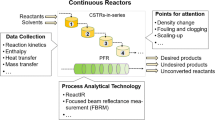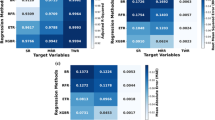Abstract
Replacement of the pseudo-resistance variable by the more robust predicted voltage variable is recommended for potline process control. The predicted voltage variable has a greater sensitivity for accurate detection of in situ bath alumina concentration. An alumina ore feed control strategy employing the predicted voltage variable is described.
Similar content being viewed by others
References
Warren Haupin, Light Metals 1998, ed. Barry Welch (Warrendale, PA: TMS, 1998), pp. 531–537.
Barry Welch, Martin Inert, and Maria Skyllas-Ka-zacos, JOM, 60(11) (2008), pp. 17–24.
Philip Biedler, “Modeling of an Aluminum Reduction Cell for the Development of a State Estimator” (Ph.D. thesis, West Virginia University, 2003, p.141).
R.G. Havercamp and B.J, Welch, Chemical Engineering and Processing, 37 (1998), pp. 177–187.
Barry Welch, et al., “Continuous Alumina Feeder,” U.S. patent 5,476,574 (1995).
Rights and permissions
About this article
Cite this article
Schneller, M.C. In situ alumina feed control. JOM 61, 26–29 (2009). https://doi.org/10.1007/s11837-009-0162-z
Published:
Issue Date:
DOI: https://doi.org/10.1007/s11837-009-0162-z




